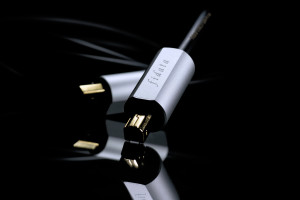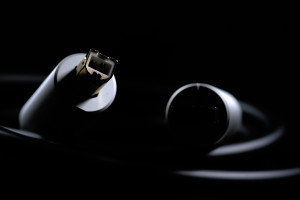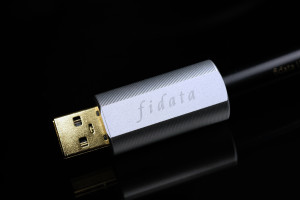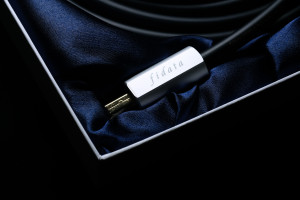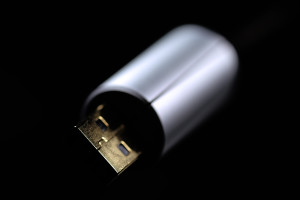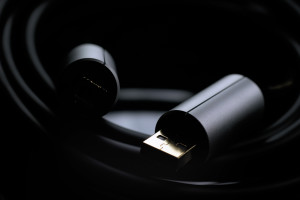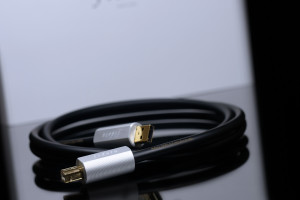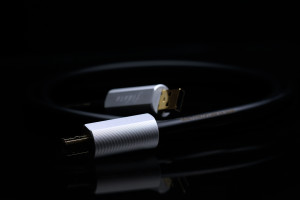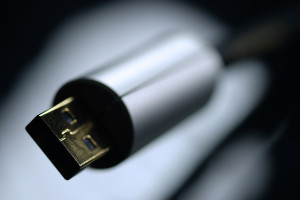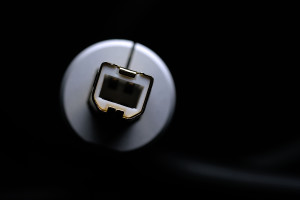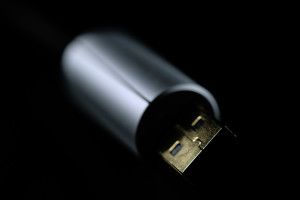After quite the surprise Fidata HFLC turned out to be, the time has come to take a closer look at this company’s the most affordable product to date – Fidata HFU2 USB cable. Its suspiciously low ask actually made this investigation very interesting. Enjoy!
Introduction
In spite of becoming operational in the audio sector not too long ago, the Fidata team already proved me rather bluntly that they’re passionate people with serious technical background, skills and knowledge how to use all this. Regardless of their type, Fidata products are gorgeously built and without a hint of exaggeration, subjectively tasteful lookers and impressive performers. Fidata HFAS1-XS20U reviewed recently and his a bit more affordable sibling – HFAS1-S10U – I consider as safe bets. With either of these I could fare perfectly happy life, but the same operation’s HFLC cable surprised me immensely as well. Even though in theory it shouldn’t, this LAN leash introduced changes beneficial within my setup and got me puzzled. Thus far I had nothing in common with such accessories, the HFLC experience allowed me to broaden my horizons and learn a thing or two, yet the rather surprising outcome was the most important bit of them all. On the other hand, yours truly had a fair share of USB related adventures in the past, hence Fidata HFU2 invoked mild early expectations, but…
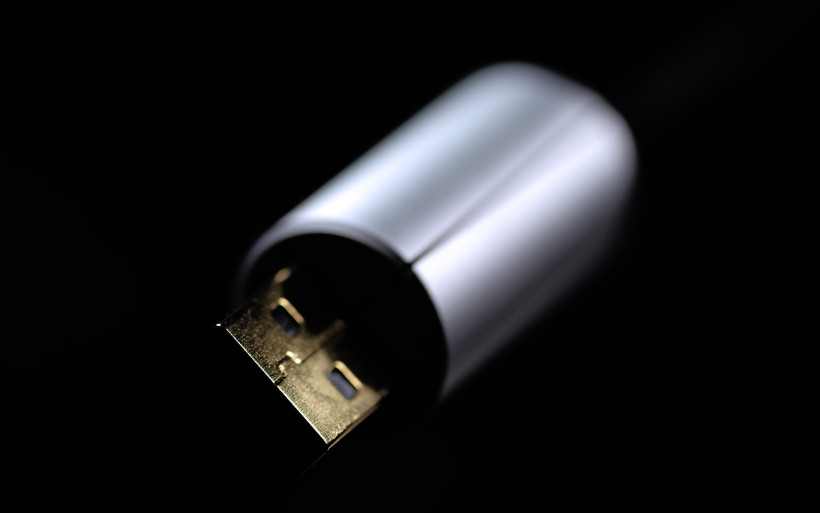 Yes, there’s always a ‘but’ somewhere in there and this time around it’s related to this writing’s heroe’s price. Put shortly, it’s suspiciously low. This is not bad at all, on the contrary, of course as long as a given product does what it should. The tricky part is Fidata’s pricing in general. This compan’y streamers almost step in the five figures realm and its €860 LAN cable surely can’t be labeled as a bargain, whaereas this review’s star is far easier on the wallet. One meter long Fidata HFU2 is sold for less than a half of its LAN sibling. What were they thinking, eh?
Yes, there’s always a ‘but’ somewhere in there and this time around it’s related to this writing’s heroe’s price. Put shortly, it’s suspiciously low. This is not bad at all, on the contrary, of course as long as a given product does what it should. The tricky part is Fidata’s pricing in general. This compan’y streamers almost step in the five figures realm and its €860 LAN cable surely can’t be labeled as a bargain, whaereas this review’s star is far easier on the wallet. One meter long Fidata HFU2 is sold for less than a half of its LAN sibling. What were they thinking, eh?
 Once all Fidata goods are taken into account, this manufacture’s USB leash isn’t a shocker and shares space with items by Curious Cables, Luna Cables and other operations considered as reasonable. I have my own theory why. The Fidata team not only expands their portfolio in logical direction via their HFU2 leash, but also naturally establishes market presence not burdened by insisted actions. It’s widely known that affordable items reach far broader audience than luxurious goods, thus what Fidata did with its HFU2’s price I consider as smart even if this cable won’t turn profitable. To gain attention of enthusiasts deeply involved in digital audio is this item’s primary task and eventual return profit is of additive value here, at least that’s my guess. Once that’s done, such crowd very much intrigued will eventually reach to the core Fidata offer, the big machines. I strongly believe that this is the Japanese grand master plan and a good one indeed.
Once all Fidata goods are taken into account, this manufacture’s USB leash isn’t a shocker and shares space with items by Curious Cables, Luna Cables and other operations considered as reasonable. I have my own theory why. The Fidata team not only expands their portfolio in logical direction via their HFU2 leash, but also naturally establishes market presence not burdened by insisted actions. It’s widely known that affordable items reach far broader audience than luxurious goods, thus what Fidata did with its HFU2’s price I consider as smart even if this cable won’t turn profitable. To gain attention of enthusiasts deeply involved in digital audio is this item’s primary task and eventual return profit is of additive value here, at least that’s my guess. Once that’s done, such crowd very much intrigued will eventually reach to the core Fidata offer, the big machines. I strongly believe that this is the Japanese grand master plan and a good one indeed.
Build
Even though Fidata HFU2 is far more affordable in comparison to its HFLC kin, it arrived dressed as equally nicely. Posh box filled with velvety material left me with the impression similarly luxurious and the same story was with the former’s warranty and test report cards. I had no valid reason to bash the product even if I’d want to. Of course a box is just that, a box and nothing more. After a minute or so to a drawer it goes and highly likely it won’t be used ever since. Though two leaflets indicated product’s reliability and in general professionally executed package.
 Fidata HFU2 is a USB2.0 class cable and my loaner arrived as a one meter snake. Though longer specimens are available too, several times already I was told that this specific length is quite ‘magical’, namely it performs better in comparison to equivalents which measure twice or thrice this size. Not a single person could explain to me why this is the case with USB cables exactly. All individuals asked in the past agreed that it’s just the way it is and that’s it. In any case, my loaner was theoretically the best possible variant out there, that’s the main takeaway.
Fidata HFU2 is a USB2.0 class cable and my loaner arrived as a one meter snake. Though longer specimens are available too, several times already I was told that this specific length is quite ‘magical’, namely it performs better in comparison to equivalents which measure twice or thrice this size. Not a single person could explain to me why this is the case with USB cables exactly. All individuals asked in the past agreed that it’s just the way it is and that’s it. In any case, my loaner was theoretically the best possible variant out there, that’s the main takeaway.
 As a regular USB audio cable, Fidata HFU2 comes finished with a USB type A plug on one end, whereas a USB type B sits at the other and both are gold-plated. Their enclosures are proprietary CNC-milled aluminium and quite heavy affairs meant to reduce vibrations and improve connection quality, whereas small gaps that run thorugh these elements were developed in order to block incoming loop-noise.
As a regular USB audio cable, Fidata HFU2 comes finished with a USB type A plug on one end, whereas a USB type B sits at the other and both are gold-plated. Their enclosures are proprietary CNC-milled aluminium and quite heavy affairs meant to reduce vibrations and improve connection quality, whereas small gaps that run thorugh these elements were developed in order to block incoming loop-noise.
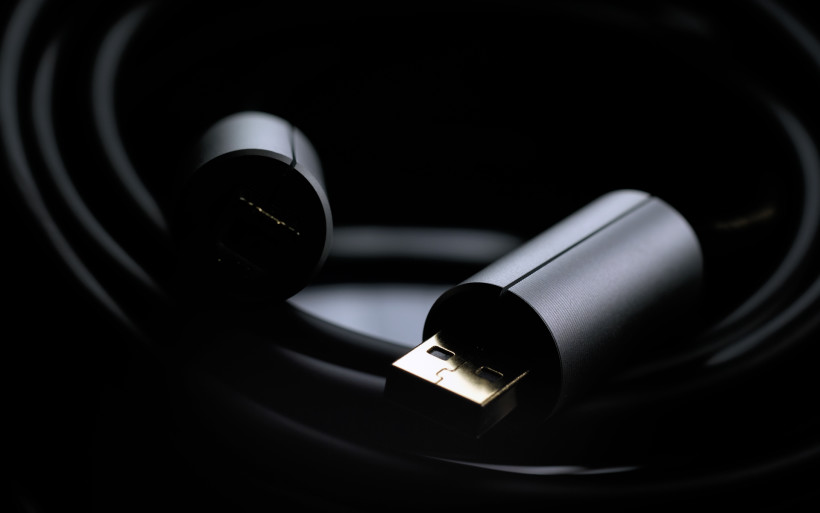 The cable’s diameter is 7mm thick and two pairs of twisted 24AWG silver-plated OFC copper strands are found inside. Power and data conductors are separated and also independently shielded. Fidata HFU2’s outer insulation sports its manufacturer’s branding (‘fidata’) similar to the one found at Fidata HFLC LAN leash. This review’s hero is flexible, easy to use and feels very much like a product of high quality. The one subjective thing that’s missing is multifilament or something of the sort. Rubber insulation doesn’t cut it for me and the very same issue I had with its HFLC kin.
The cable’s diameter is 7mm thick and two pairs of twisted 24AWG silver-plated OFC copper strands are found inside. Power and data conductors are separated and also independently shielded. Fidata HFU2’s outer insulation sports its manufacturer’s branding (‘fidata’) similar to the one found at Fidata HFLC LAN leash. This review’s hero is flexible, easy to use and feels very much like a product of high quality. The one subjective thing that’s missing is multifilament or something of the sort. Rubber insulation doesn’t cut it for me and the very same issue I had with its HFLC kin.
Sound
The Fidata HFU2 was used in-between the same company’s HFAS1-XS20U server/streamer combo and my LampizatOr Pacific (KR Audio 5U4G Ltd. Ed. z 2016 roku + KR Audio T-100). The former then fed alternately either Trilogy 925 or Kinki Studio EX-M1 integrated amps and from there signal went to Boenicke W8 floorstanders. And lastly, a regular $1 USB throwaway was the main opponent of this review’s hero and both were of the same length.
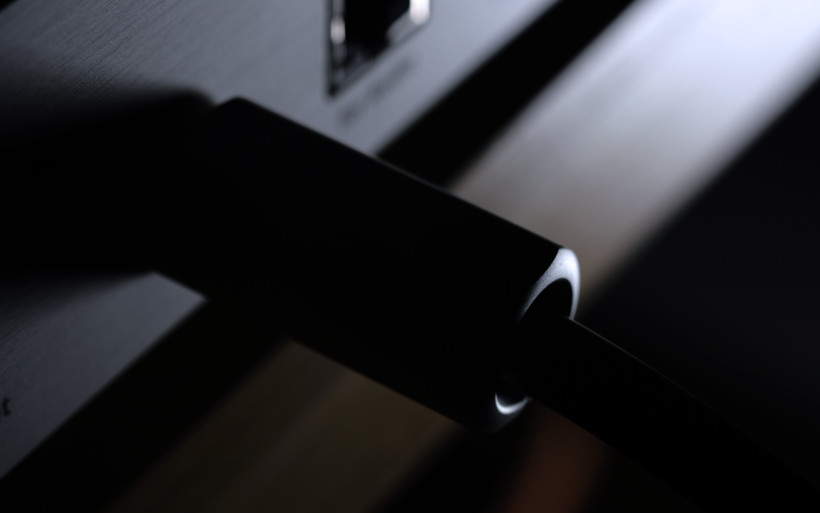 All USB accessories known to yours truly addressed very similar if not the same issues. They didn’t influence music in any obvious way but acted in the background instead. Neither these items shifted tonal balance in any direction, nor elevated/decreased tonal temperature or tinkered with soundstage. Background cleaning service was conducted via prettier, darker image, low FR defined better and less edgy plus more refined upstairs. All these measures made the outcome pronounced better and fishing for nuances was far easier. Listed alterations small/subtle by nature became audible when combined and surely elevated music quality in general. All this was more or less the case from one product to another, though I haven’t yed had a chance to encounter a USB item barely audible or not fit for the job at all. It also comes as no surprise that my sub-par laptop takes some credit for this. Over the years it proved me to be an audio machine far from perfect and very susceptible to USB related tweaks.
All USB accessories known to yours truly addressed very similar if not the same issues. They didn’t influence music in any obvious way but acted in the background instead. Neither these items shifted tonal balance in any direction, nor elevated/decreased tonal temperature or tinkered with soundstage. Background cleaning service was conducted via prettier, darker image, low FR defined better and less edgy plus more refined upstairs. All these measures made the outcome pronounced better and fishing for nuances was far easier. Listed alterations small/subtle by nature became audible when combined and surely elevated music quality in general. All this was more or less the case from one product to another, though I haven’t yed had a chance to encounter a USB item barely audible or not fit for the job at all. It also comes as no surprise that my sub-par laptop takes some credit for this. Over the years it proved me to be an audio machine far from perfect and very susceptible to USB related tweaks.
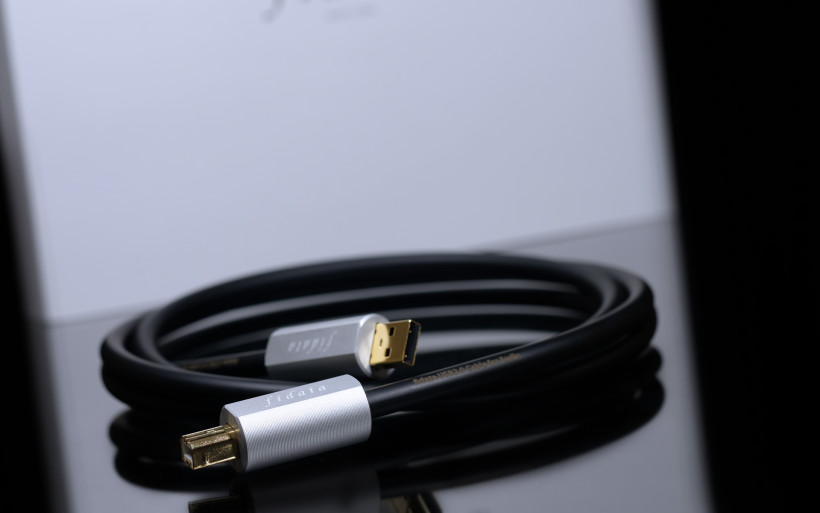 Who knows? Perhaps yours truly is simply lucky or perhaps there’s a fair to good chance that all USB related cables, reclockers and galvanic isolators do things as described above? But that’s not all of it yet. Along my USB road I’ve encountered several exceptions which, regular USB stunts aside, did something extra. Active iFi audio iGalvanic3.0 made the outcome leaner yet faster, Fidata HFLC sorted boom associated with wild upper bass at my place and Eunoia and Apricity cables by local StavEssence were on purpose tuned to do fundamentally different things with sound. The question to ask now would be about Fidata HFU2’s specialty. Was there any to begin with?
Who knows? Perhaps yours truly is simply lucky or perhaps there’s a fair to good chance that all USB related cables, reclockers and galvanic isolators do things as described above? But that’s not all of it yet. Along my USB road I’ve encountered several exceptions which, regular USB stunts aside, did something extra. Active iFi audio iGalvanic3.0 made the outcome leaner yet faster, Fidata HFLC sorted boom associated with wild upper bass at my place and Eunoia and Apricity cables by local StavEssence were on purpose tuned to do fundamentally different things with sound. The question to ask now would be about Fidata HFU2’s specialty. Was there any to begin with?
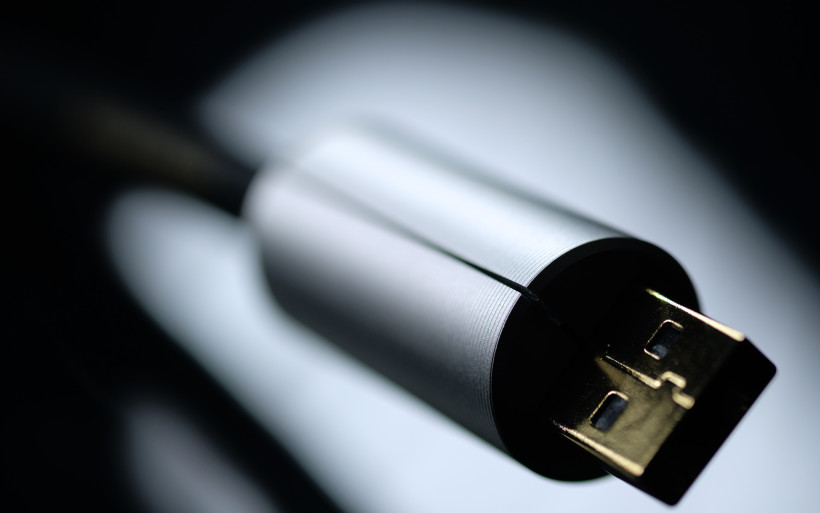 To list all USB components makes perfect sense as in their context it’s easy for me to find a suitable place for this review’s main dish. Fidata HFU2 didn’t sport any ‘extra’ feature, namely one virtue which I could consider as unique solely to this item and found in no other. This is of no issue though, as the product is affordable after all and did the job where it supposed to. Shortly past replacing the stock USB specimen with the Japanese leash, audibly cleaner background kicked in in an instant. The picture in front of me got also darker, which complimented i.e. minimalist music very well. When the space itself plays the key role in a given recording, the ability to grasp it utmost easily is of essence. Less grain, more room in-between a handful of instruments at most and very much dead silent environment itself elevate the experience significantly and that’s what Fidata HFU2 provided without any second guesses or abnormally long and complex auditions involved.
To list all USB components makes perfect sense as in their context it’s easy for me to find a suitable place for this review’s main dish. Fidata HFU2 didn’t sport any ‘extra’ feature, namely one virtue which I could consider as unique solely to this item and found in no other. This is of no issue though, as the product is affordable after all and did the job where it supposed to. Shortly past replacing the stock USB specimen with the Japanese leash, audibly cleaner background kicked in in an instant. The picture in front of me got also darker, which complimented i.e. minimalist music very well. When the space itself plays the key role in a given recording, the ability to grasp it utmost easily is of essence. Less grain, more room in-between a handful of instruments at most and very much dead silent environment itself elevate the experience significantly and that’s what Fidata HFU2 provided without any second guesses or abnormally long and complex auditions involved.
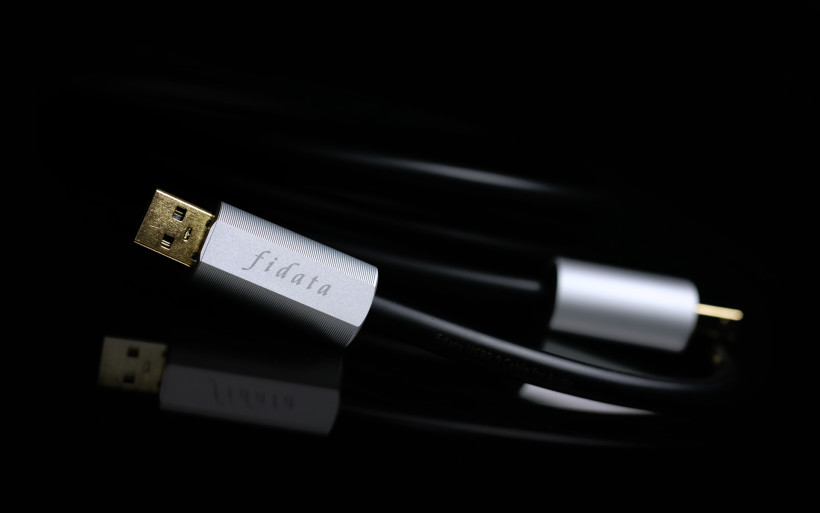 The sorting service introduced via the Japanese product yours truly actually enjoys regardless of music type. Elevated clarity due to less junk audible ups the ante on effortlessness count and less fatigue follows. But the important bit is that any audible bill for this job shouldn’t occur. One gets music of better quality, without any significant change and that’s what Fidata HFU2 does exactly, although its increased informational aspect isn’t the only one that got improved. In comparison to the regular el cheapo USB cable, the Japanese didn’t sport any downstairs related changes yet took top audible FR’s edge off, decayed better and injected some density into percussion plates. Though most importantly the latter made music to flow better; more easygoing, engaging, moist and in general of upper tier class as a whole. Increased resolution aside, this very much musical/vivid aspect I considered as the second biggest improvement. The ordinary cable sounded more matte, flat and compressed. It lacked on-stage ease and had dynamic contrasts essential in i.e. orchestral and tribal music truncated.
The sorting service introduced via the Japanese product yours truly actually enjoys regardless of music type. Elevated clarity due to less junk audible ups the ante on effortlessness count and less fatigue follows. But the important bit is that any audible bill for this job shouldn’t occur. One gets music of better quality, without any significant change and that’s what Fidata HFU2 does exactly, although its increased informational aspect isn’t the only one that got improved. In comparison to the regular el cheapo USB cable, the Japanese didn’t sport any downstairs related changes yet took top audible FR’s edge off, decayed better and injected some density into percussion plates. Though most importantly the latter made music to flow better; more easygoing, engaging, moist and in general of upper tier class as a whole. Increased resolution aside, this very much musical/vivid aspect I considered as the second biggest improvement. The ordinary cable sounded more matte, flat and compressed. It lacked on-stage ease and had dynamic contrasts essential in i.e. orchestral and tribal music truncated.
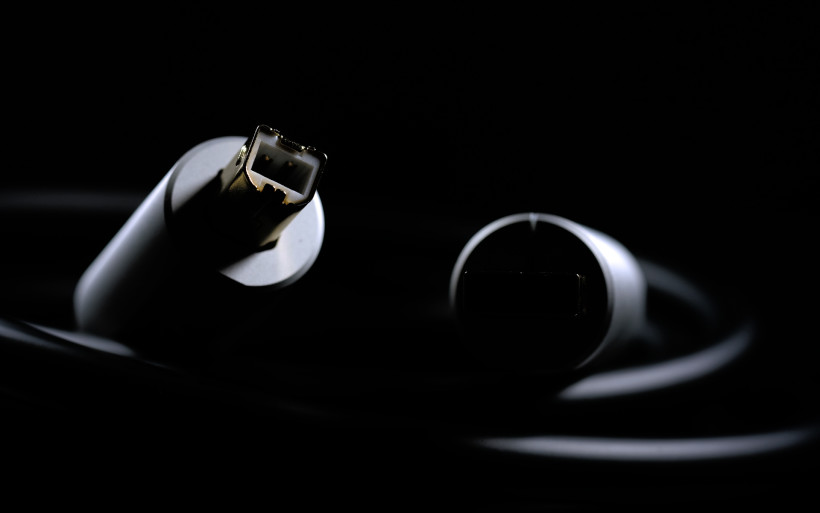 All reworks the Fidata HFU2 introduced were subtle when singled out, though perfectly audible in my setup when on the job as a team. This is what I initially expected and what I got exactly later on. Because my time with the same company’s server/streamer was almost done, just for fun I checked the effect past getting back to my regular transport and a very interesting thing happened in the process. The difference between this review’s hero and its competitor got far more intense. The former tackled the usual suspects yet marked its presence more and the USB throwaway sang even worse in comparison. This short experience gave me a way to think that the HFAS-1XS20U’s USB output was of quality. I’m far from saying that this platform’s RJ45 input isn’t, though Fidata HFLC LAN cable was even more potent performer. There’s no way to be in 100% certain why this was the case, though if I had to make an educated guess, I’d point my finger at Linksys WRT160N router exploited in this exercise. Maybe this is the bottom line? Maybe these machines introduce so much junk in proper audio setups that all LAN tweaks become utmost potent in the process and surpass USB tools?
All reworks the Fidata HFU2 introduced were subtle when singled out, though perfectly audible in my setup when on the job as a team. This is what I initially expected and what I got exactly later on. Because my time with the same company’s server/streamer was almost done, just for fun I checked the effect past getting back to my regular transport and a very interesting thing happened in the process. The difference between this review’s hero and its competitor got far more intense. The former tackled the usual suspects yet marked its presence more and the USB throwaway sang even worse in comparison. This short experience gave me a way to think that the HFAS-1XS20U’s USB output was of quality. I’m far from saying that this platform’s RJ45 input isn’t, though Fidata HFLC LAN cable was even more potent performer. There’s no way to be in 100% certain why this was the case, though if I had to make an educated guess, I’d point my finger at Linksys WRT160N router exploited in this exercise. Maybe this is the bottom line? Maybe these machines introduce so much junk in proper audio setups that all LAN tweaks become utmost potent in the process and surpass USB tools?
Summary
Fidata HFU2 turned out to be a textbook high quality USB leash and nothing less. Sorting service it provided addressed the well-known and usual symptoms without any shocking numbers on the bill. The product’s nicely made, does what it’s supposed to and didn’t cause any usability issues, thus I consider it as safe and not overdone purchase.
Fidata HFU2 didn’t turn things upside down as potently as i.e. alike yet far pricier goods by StavEssence or Tellurium Q, though on many counts it did similar work for far lesser coin and that’s the important part. All things considered, the Fidata team delivered a good product, which is also sanely priced. Not only they proved me for the fourth time that they’re deep in the digital know, but also showed that things can happen for money considered as reasonable in this hobby, which counts as a job well done in my book. ‘Till next time!
Associated equipment:
- Amplifiers: Trilogy 925, Kinki Audio EX-M1
- Sources: LampizatOr Pacific (KR Audio T-100 + KR Audio 5U4G Ltd. Ed.)
- Speakers: Boenicke Audio W8
- Transports: Fidata HFAS1-XS20U
- Network components:a regular $1 LAN throwaway
- Speaker cables: Forza AudioWorks Noir Concept, Audiomica Laboratory Celes Excellence, Luna Gris
- Interconnects: Forza AudioWorks Noir, Audiomica Laboratory Erys Excellence
- Power components: Gigawatt PF-2 + Gigawatt LC-2 MK2 + Forza AudioWorks Noir Concept/Audiomica Laboratory Ness Excellence
- Rack: Franc Audio Accesories Wood Block Rack
- Music: NativeDSD
Retail prices of reviewed components in EU (excl. tax):
- Fidata HFU2 1/2/3 meters: €340/370/400
Manufacturer: Fidata



